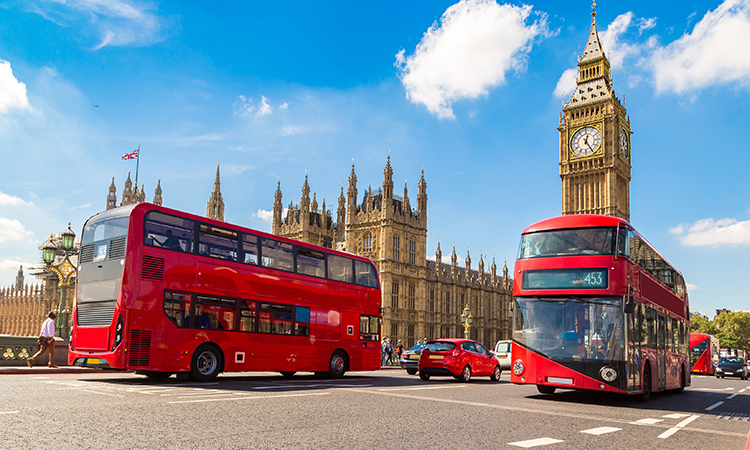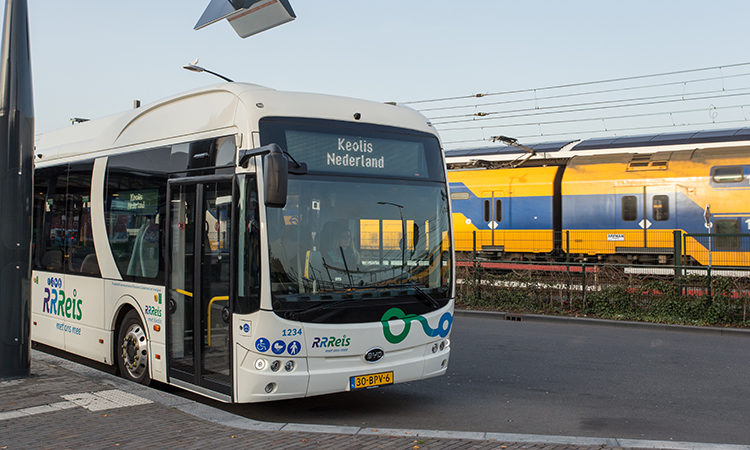Integration is essential to the post-COVID-19 recovery of local public transport
- Like
- Digg
- Del
- Tumblr
- VKontakte
- Buffer
- Love This
- Odnoklassniki
- Meneame
- Blogger
- Amazon
- Yahoo Mail
- Gmail
- AOL
- Newsvine
- HackerNews
- Evernote
- MySpace
- Mail.ru
- Viadeo
- Line
- Comments
- Yummly
- SMS
- Viber
- Telegram
- Subscribe
- Skype
- Facebook Messenger
- Kakao
- LiveJournal
- Yammer
- Edgar
- Fintel
- Mix
- Instapaper
- Copy Link
Posted: 5 October 2021 | Alistair Gordon - Keolis UK | No comments yet
Alistair Gordon, CEO of Keolis UK, outlines the progress that the transport operator has made in transitioning to sustainable fuel alternatives, and outlines how the bus sector can improve connectivity for passengers after the pandemic.


COVID-19 has placed immense pressure on our public transport systems. Even as we emerge on the other side of multiple lockdowns and months of restrictions, the way that we use our trams, trains and buses is unlikely to ever return to normal.
Changes brought about by the pandemic – such as the shift to home working – look set to stay, at least in some form, prompting a permanent shift in our travel patterns and commuting habits.
For the public transport sector to recover and return to a state of growth, there will need to be some new thinking to reflect the ‘new normal’ of travel”
For the public transport sector to recover and return to a state of growth, there will need to be some new thinking to reflect the ‘new normal’ of travel. But the key to this new thinking must be centred on creating truly integrated transport networks by utilising a variety of modes.
Now, more than ever, we need to think about the opportunities for using bus networks to form a more integral part of the transport mix. In our post-COVID-19 recovering cities, we need to find efficiencies for buses – particularly where they are forced to compete with other local services, such as trains and trams, leaving passengers with disjointed services and fragmented journeys. With central and local government finances stretched, some common sense needs to be brought into play.
Balancing passenger needs and sustainability
As well as being bad for passengers, this approach is ultimately bad for the environment, too. Poor route planning is at odds with sustainable mobility practices, resulting in greater congestion, idling and fuel usage for the many diesel buses that are still in operation.
Embracing opportunities to re-think bus networks… will help our urban centres to adapt to new passenger expectations of post-COVID-19 public transport”
For local authorities, faced with the twin challenges of promoting sustainability and satisfying demand for effective public transport networks, placing buses at the heart of their strategies could be the key to success. Already, the likes of Andy Burnham, Greater Manchester’s elected Mayor, have taken the first steps to addressing this, with his announcement that the region’s bus services will be re-regulated. Passengers will benefit from ‘joined-up’ timetables across buses and trams, and more straightforward ticketing and fare structures, as part of the mayor’s strategy. It is not difficult to see the efficacy of this approach when, with London, we have a world-leading public transport city setting the global standard.
Embracing opportunities to re-think bus networks, ensuring that they satisfy first- and last-mile customer journeys, along with capitalising on advances in alternative fuel technologies (electric and hydrogen vehicles), will help our urban centres to adapt to new passenger expectations of post-COVID-19 public transport that is both efficient and sustainable.
Electric dreams
Our experience at Keolis clearly demonstrates the benefits of this double-pronged approach to enhancing both mobility and sustainability. A first key step for local public transport authorities (PTAs) is to make the transition from diesel buses, which are still the most common fuel type on UK roads, to eco-friendly fleets.
We recently helped to introduce Europe’s largest electric bus fleet in the Netherlands – a 246-strong fleet to serve the provinces of Gelderland and Overijissel. A bespoke e-bus network was designed specifically to meet the needs of the local population, with 120 new lines and 50 stations connecting more than 180 villages and four cities.


Credit: Keolis – Keolis has recently helped to introduce Europe’s largest electric bus fleet in the Netherlands.
By replacing the existing diesel fleet, the PTA is forecast to slash emissions by 15,755 tonnes of CO2, 5.31 tonnes of nitrogen and 133 kilos of fine particulates every year. Noise pollution is also significantly reduced, with electric buses operating at less than 70 decibels, compared to 85 decibels for diesel engines.
Another example is in Sydney, where a partnership with Transport for New South Wales (TfNSW) is helping to enhance the passenger experience and boost ridership, as well as support the network’s green energy transition by 2030. Over the next eight years, we will work to introduce 125 new electric buses by 2030. This is the Australian bus market’s largest green transport transition to date.
Embracing alternative fuels
Advances in bus innovation over recent years means that electric is not the only low-carbon fuel on offer for local authorities that are looking to go green. In the French city of Pau, for example, Keolis is delivering a fully hydrogen-powered bus rapid transport (BRT) service.
As a long-standing partner of the Pau transport operator Société de Transport de l’Agglomération Paloise, Keolis has operated the city’s transport network, IDELIS, for more than 20 years. Now, we are collaborating on its modernisation through the Fébus network, with the operation of eight 100 per cent hydrogen buses.
Operating on the route between the city’s main hubs, passengers benefit from enhanced connectivity between Pau’s educational, administrative, commercial and leisure districts.
The six-kilometre route runs in dedicated lanes, protected from other traffic and benefitting from a priority system at crossroads, with a significant reduction in travel minutes across the city.
It is clear that change is needed to help the UK’s public transport network to properly serve the evolving needs of passengers as we emerge from the worst of the pandemic”
It is clear that change is needed to help the UK’s public transport network to properly serve the evolving needs of passengers as we emerge from the worst of the pandemic. Taking advantage of the opportunity to address new mobility demands and drive down emissions will set local authorities up for success.
There is a wealth of best practice from around the world for transport leaders to draw inspiration from, as well as closer to home, as already mentioned. But the benefits of adopting more sustainable, integrated networks underpinned by a robust bus provision are clear to see.
For the UK, as it looks to build back better after the pandemic, taking steps to rethink its public transport system will be key to supporting an essential return to sustained economic growth.
Alistair Gordon is CEO of Keolis UK.
Related topics
Alternative Power, COVID-19, Passenger Experience, Public Transport, Sustainable Urban Transport
Issue
Issue 3 2021
Related modes
Bus & Coach
Related cities
United Kingdom
Related organisations
IDELIS, Keolis, Keolis UK, Société de Transport de l’Agglomération Paloise, Transport for New South Wales (TfNSW)
Related people
Alistair Gordon, Andy Burnham








